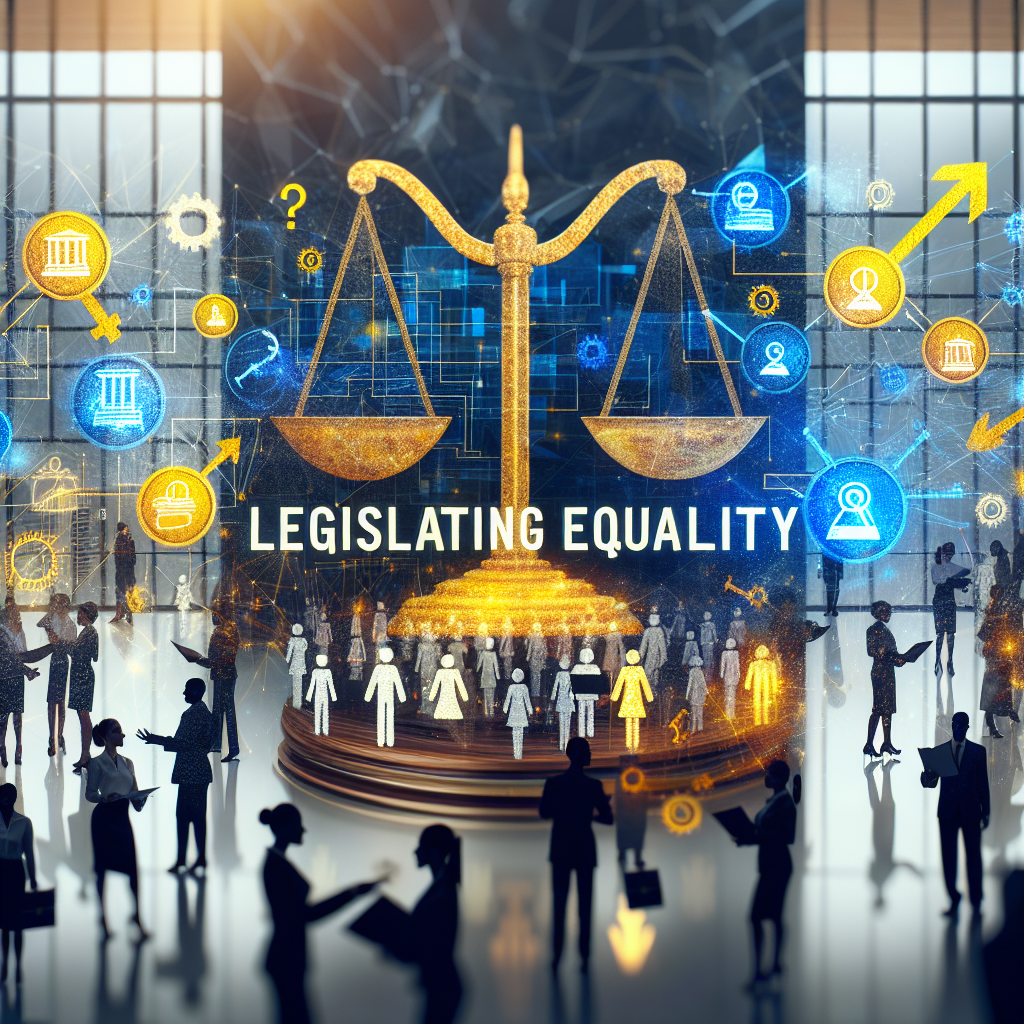
Introduction
In a world striving for equality, gender discrimination in the workplace remains a pressing concern. Statistics show that women, especially women of color and those in lower-income brackets, face systemic barriers that hinder their professional growth and earning potential. As society evolves, so too does the framework of our laws, aiming to level the playing field for all genders. Legislating Equality: How New Laws Are Tackling Gender Discrimination in the Workplace is an essential exploration into the transformative laws designed to address these inequities and promote a fairer labor market.
The Significance of Gender Equality in the Workplace
Understanding Gender Disparities
The statistics tell a stark story. Gender wage gaps persist across industries, impacting women’s lifetime earnings, retirement savings, and overall economic independence. For example, in 2020, women earned only about 84% of what men earned in the same roles, according to the U.S. Census Bureau. This disparity extends beyond salaries; it permeates job opportunities, promotions, and workplace culture. For businesses, these inequalities can lead to a loss of talent and productivity, impacting overall success.
The Role of Legislation
Legislation is paramount in addressing these injustices, providing a framework for change. New laws aimed at legislating equality not only protect employees but also encourage employers to cultivate inclusive workplaces. The introduction of regulations such as pay transparency and anti-discrimination policies marks a crucial step towards dismantling systemic bias.
Case Studies in Legislative Change
Case Study 1: The Paycheck Fairness Act
The Paycheck Fairness Act seeks to close the wage gap by addressing pay discrimination. This proposed law would make it illegal for employers to retaliate against workers who discuss their salaries and would mandate that employers justify pay differentials. Noteworthy is the impact this legislation has had on similar initiatives at the state level.
Analysis: By offering protection around salary discussions, this act empowers employees, fostering a culture of transparency that leads to fairer pay practices.
Case Study 2: California’s Gender Diversity Law
California has made strides with its mandate requiring publicly held companies to have a certain number of women on their boards. The law, which aims to improve gender representation in leadership roles, has seen companies such as Cisco and Intel increase female board members.
Analysis: This law showcases how legislative actions can directly influence corporate behavior, resulting in a more diverse leadership that is reflective of the general populace.
Case Study 3: The Equal Employment Opportunity Commission (EEOC) Initiatives
The EEOC has implemented various programs aimed at education and awareness regarding workplace discrimination. Their proactive approach involves investigating claims and partnering with organizations to conduct outreach.
Analysis: Such initiatives underscore the importance of not only policy creation but also enforcement and education in combatting discrimination.
The Impact of New Laws on Workplace Culture
Shifting Mindsets
Legislation like the Equality Act and various state-level laws have catalyzed a shift in workplace culture. Companies are increasingly aware that fostering diversity is not only good ethics; it’s good business. Studies show that diverse teams outperform their homogenous counterparts by 35%.
Creating Safe Spaces for All Genders
Legislating equality is about more than just pay; it’s about creating environments where all employees feel safe and valued. Policies against harassment and bullying, alongside support for parental leave, create a culture of respect and inclusivity.
Tables and Charts
| Legislation | Key Features | Impact |
|---|---|---|
| Paycheck Fairness Act | Pay transparency, anti-retaliation | Empowers employees, reduces pay gap |
| California Gender Diversity Law | Female quotas on boards | Increases diversity, enhances decision-making |
| EEOC Initiatives | Awareness programs, claims investigation | Educates workforce, enforces anti-discrimination |
Actionable Insights for Employers
Implementing Effective Policies
- Conduct Pay Audits: Regularly analyze salary data to identify and address disparities.
- Offer Training Programs: Invest in training to mitigate unconscious bias in hiring and promotions.
- Encourage Open Discussions: Foster a culture where employees feel safe discussing pay and discrimination without fear of retaliation.
Conclusion
Legislating Equality: How New Laws Are Tackling Gender Discrimination in the Workplace is not merely an emerging legal trend; it represents a moral imperative. The journey toward gender equality is ongoing, and while laws provide the necessary framework, true change requires commitment from every individual, organization, and society at large. Businesses that prioritize inclusivity will not only thrive; they will pave the way for a brighter, more equitable future for all.
FAQs
1. What is workplace gender discrimination?
Workplace gender discrimination occurs when an employee is treated unfairly or unequally based solely on their gender. This can include unequal pay, lack of promotions, or a hostile work environment.
2. How can laws effectively tackle gender discrimination?
New laws can provide clear guidelines for employers, establish protections for employees, and create a culture of accountability that encourages equitable treatment.
3. Are there penalties for violating anti-discrimination laws?
Yes, penalties for violating these laws can include fines, forced reinstatement, and damages awarded to affected employees.
4. How can companies foster gender equality beyond compliance with laws?
Companies can initiate diversity training, create policies that support work-life balance, and actively promote women to leadership roles to foster an inclusive work culture.
5. What can individuals do to advocate for gender equality in the workplace?
Individuals can educate themselves on their rights, support policies that promote equality, and engage in open dialogues with employers about diversity and inclusion initiatives.
Through Legislating Equality: How New Laws Are Tackling Gender Discrimination in the Workplace, we uncover not just the importance of legislation but the collective responsibility—both leaders and employees—hold to create an equitable work environment. As we navigate these changes, let’s ensure that progress continues, as every action counts in leveling the playing field.

















